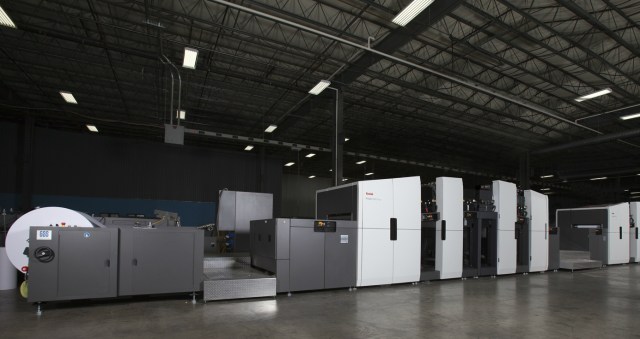
It seems like hardly a week goes by that I don’t do a presentation on how printing is a positive example of an industry that has adapted to low carbon emissions and pollution. A couple of years ago, I found that the industry has absorbed technical development much faster than many other sectors. The efficiency of the trade has improved massively over the past 20 years. I’m sure that by now, many readers would have heard that today’s printing industry is likely 97% less polluting than it was back in 1990 – a remarkable figure.
The most significant changes are in pre-press, which was an early adopter of digital systems. Other than the IT industry, few sectors embraced digital data as widely and early as printing. Machinery has changed too, becoming much more energy-efficient. But fundamentally, presses today use the same technology that was in place 20 years ago. All of that is about the change.
At Drupa 2012, the most impressive technology will be high-speed, high-quality inkjet systems. Inkjet is not a modern invention. The mechanism by which a liquid stream breaks up into droplets was actually described by Lord Rayleigh in 1878. But it wasn’t until about 20 years ago the world saw the first A4 desktop devices. Although faster than other types of office printing at the time, they lacked quality and in cases required special paper coating to make the ink dry fast enough to be useful.
The environmental outcome of these new inkjet machines is the continual “ecological modernisation” of the printing industry. The new systems will make high-quality printing completely waste free, chemical-free and silent. It could be so transformational that printing will no longer reside in a factory setting. Perhaps in a few years, commercial printing could be held up as the ultimate example of a clean industry.
Inkjet offers all of the benefits that have been put forward by digital suppliers over the past decade, such as on-demand printing, variable imaging and eco efficiency. However, up until now, digital has been held back by the limited sized of the printing area and hence rather low productivity compared with conventional offset lithography.
Inkjet technologies do not appear to have the size limits. The technology has been used to print on the sides of trucks, cars and even buildings. Size is hardly a limit. The current crop of inkjet production machines are very productive, though not up to litho. But the future comes very fast. The continual modernisation of the industry is rapidly making the sector pollution free and the energy consumption per impression is incredibly low. The next phase of printing will make it the ultimate clean industry.
Of course, every silver lining has its dark cloud. In the case of inkjet, there have been discussions around the recyclability – or ‘de-inkability’ – of print-outs. The issue is not limited to inkjet, but the whole digital printing space comes under that concern. There’s not enough space here to go into the issue in detail, but it is an issue that may, or may not, be significant when balanced against the benefits of the new direction of printing.
Phillip Lawrence is a consultant and speaker who specialises in print and the environment
Comment below to have your say on this story.
If you have a news story or tip-off, get in touch at editorial@sprinter.com.au.
Sign up to the Sprinter newsletter

